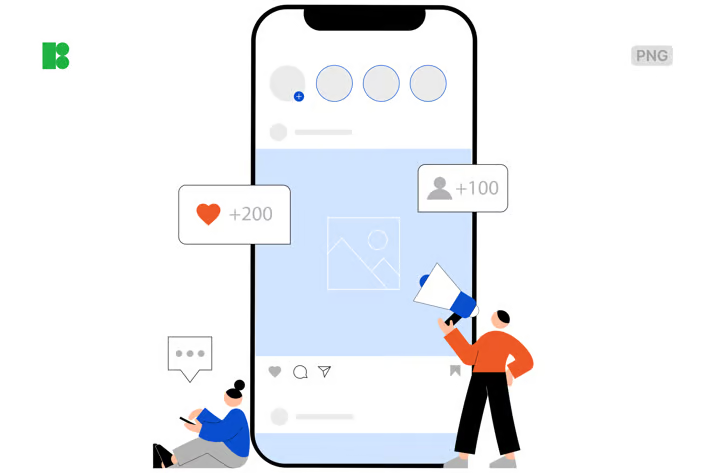In today’s fast-paced digital world, having a strong online presence is crucial for businesses in Ottawa. With the right digital marketing services, you can elevate your brand, engage your audience, and drive sales. Whether you’re a startup or an established company, understanding the local market and leveraging effective strategies can set you apart from the competition.
Ottawa’s digital marketing landscape offers a variety of services tailored to meet your needs. From search engine optimization (SEO) to social media management, these services help you connect with your target audience and maximize your reach. By embracing these innovative solutions, you’ll not only enhance your visibility but also build lasting relationships with your customers. Explore how Ottawa’s digital marketing services can transform your business and pave the way for success.
Understanding Ottawa Digital Marketing Services
Ottawa digital marketing services support businesses in enhancing their online presence effectively. These services focus on various strategies to reach target audiences and convert them into loyal customers. Here are the key components of Ottawa digital marketing services:
Search Engine Optimization (SEO)
SEO improves a website’s visibility in search engine results. By optimizing content with relevant keywords, creating quality backlinks, and enhancing site performance, your business can rank higher on search engines like Google. Effective SEO practices attract organic traffic, leading to increased leads and sales.
Social Media Management
Social media management involves creating and curating content across various platforms like Facebook, Instagram, and Twitter. Engaging posts drive interaction from your audience, while consistent branding across platforms builds recognition. Regular updates and responding to comments foster a sense of community around your brand.
Content Marketing
Content marketing focuses on creating valuable content to attract and retain customers. Blogs, articles, and infographics can educate potential customers about your products or services. High-quality content positions your business as an authority in your industry and can improve search rankings.
Pay-Per-Click Advertising (PPC)
PPC advertising places ads on search engine results pages. You pay only when someone clicks your ad, making it a cost-effective marketing strategy. By targeting specific keywords and demographics, your ads reach consumers actively searching for your offerings. This leads to immediate traffic and potential conversions.
Email Marketing
Email marketing nurtures leads by sending targeted messages to subscribers. You can segment your audience to deliver personalized content and offers. Engaging email campaigns encourage customers to return and make purchases, fostering retention.
Website Design and Development
A well-designed website serves as the foundation for your digital marketing efforts. User-friendly navigation, responsive design, and fast loading times contribute to a positive user experience. Optimizing your website for mobile devices ensures accessibility for all users.
Analytics and Reporting
Analytics track the performance of your digital marketing strategies. Tools like Google Analytics provide insights into website traffic, user behavior, and conversion rates. Regular reporting helps refine strategies based on data, maximizing effectiveness.
Local SEO
Local SEO focuses on optimizing your digital presence for local searches. Claiming your Google My Business listing, managing online reviews, and ensuring consistent NAP (Name, Address, Phone) information across the web increase visibility among local customers. This approach directly supports businesses targeting the Ottawa market.
Influencer Marketing
Influencer marketing leverages relationships with popular online personalities to promote your brand. Working with influencers can enhance credibility and expand reach to new audiences. Focus on finding influencers whose following aligns with your target market for optimal results.
Implementing these Ottawa digital marketing services can significantly impact your business growth. Utilizing these strategies creates a robust online presence, engages customers, and drives sales effectively.
Types of Digital Marketing Services
Digital marketing services encompass a wide array of techniques that help businesses promote their products and services online. Understanding these services aids in selecting the right approach for your business needs.
Search Engine Optimization (SEO)
SEO focuses on improving your website’s visibility in search engine results. This service involves optimizing various elements on your site, including keywords, meta tags, and content. A well-structured SEO strategy increases organic traffic and enhances online presence.
- Keyword Research: Identifying relevant keywords helps in targeting the right audience. Use tools to find keywords that potential customers use when searching for products or services like yours.
- On-Page Optimization: Improve elements such as titles, headers, and images to ensure search engines understand your content. Each page should be optimized for specific keywords.
- Technical SEO: Ensure your website has a fast loading speed and mobile-friendliness. Fix issues like broken links and improve site navigation to boost user experience.
- Backlink Building: Gain backlinks from reputable sites to increase authority. High-quality backlinks signal to search engines that your site is trustworthy.
- Local SEO: For businesses targeting local customers, optimize your Google Business Profile and use local keywords to improve visibility in your area.
Implementing these techniques can dramatically improve your website’s rankings in search engine results pages (SERPs).
Pay-Per-Click Advertising (PPC)
PPC allows you to gain visibility through paid ads that appear on search engines and social media platforms. Advertisers pay a fee each time their ad is clicked, making it a cost-effective strategy for gaining immediate traffic.
- Ad Platforms: Utilize platforms like Google Ads or Bing Ads to create targeted campaigns. Each platform offers unique features to reach specific audiences.
- Keyword Selection: Select keywords carefully to attract relevant traffic. Consider using a mix of broad and long-tail keywords to target various customer segments.
- Ad Copy Creation: Write clear and compelling ad copy that encourages clicks. Include a strong call to action and relevant keywords to improve ad relevance.
- Budget Management: Set daily and monthly budgets to control spending. Monitor performance closely to adjust bids and maximize return on investment (ROI).
- Analytics and Tracking: Use tools to track conversion rates and click-through rates. Analyzing data helps refine your approach and improve future campaigns.
PPC campaigns enable businesses to appear at the top of search engine results quickly, driving traffic with measurable results.
Social Media Marketing
Social media marketing leverages platforms like Facebook, Instagram, and Twitter to connect with audiences. A strong social media presence enhances brand recognition and customer engagement.
- Platform Selection: Choose social media platforms that align with your target audience’s preferences. Different platforms serve different demographics and purposes.
- Content Creation: Develop engaging content such as images, videos, and posts that resonate with your audience. Interactive content like polls and contests can boost engagement.
- Posting Strategy: Maintain a consistent posting schedule to keep your audience engaged. Use analytics to determine the best times to post based on audience activity.
- Community Management: Respond to comments and messages promptly. Engaging with your audience builds trust and encourages customer loyalty.
- Advertising Options: Explore paid advertising on social media to reach broader audiences. Target ads based on demographics, interests, and behaviors to maximize effectiveness.
Using social media marketing effectively enhances interactions with customers, driving brand awareness and loyalty.
Content Marketing
Content marketing focuses on creating and sharing valuable content to attract and retain customers. This strategy positions your business as a trusted authority in your industry.
- Blogging: Write informative blog posts that address common questions and concerns related to your industry. Regularly publishing content keeps your audience informed and engaged.
- Video Content: Create videos that explain products or services and highlight customer testimonials. Video content is highly engaging and shareable, increasing reach.
- Infographics: Use infographics to present complex information in a visually appealing manner. These can be easily shared on social media, increasing visibility.
- Guest Posting: Contribute articles to reputable blogs in your industry. This enhances credibility and drives traffic back to your site through backlinks.
- Ebooks and Guides: Offer in-depth guides or ebooks that provide detailed insights. Collect email addresses in exchange for these resources to nurture leads.
Content marketing builds authority and fosters trust, aiding in long-term customer relationships.
Email Marketing
Email marketing involves sending targeted messages to your audience directly. This cost-effective strategy helps nurture leads and maintain customer engagement.
- List Building: Grow your email list through sign-up forms on your website and social media. Offer incentives like discounts or free resources to encourage subscriptions.
- Segmentation: Segment your email list based on customer behavior and preferences. Tailored messages result in higher engagement and conversion rates.
- Personalization: Use personalized greetings and content to increase relevance. Addressing customers by name and considering their interests enhances the user experience.
- Campaign Creation: Design email campaigns with clear objectives, whether promoting products or sharing valuable content. Include strong calls to action to encourage responses.
- Analytics: Monitor open rates, click-through rates, and conversions. Analyzing these metrics helps refine strategies and improve future campaigns.
Email marketing effectively keeps your brand in the minds of customers, driving sales and engagement.
Choosing the Right Digital Marketing Service Provider
Choosing the right digital marketing service provider involves a careful assessment of several critical factors. The following subheadings outline key aspects to consider when selecting a provider that fits your business’s needs.
Evaluating Experience and Expertise
Evaluate the experience and expertise of potential service providers. Examine their years in operation and the range of industries they have served. Look for providers that have successfully handled projects similar to yours. Providers with a deep understanding of digital marketing strategies gain insights from their past work. Checking their qualifications, including certifications and training, also proves beneficial as this can indicate their proficiency in various marketing disciplines.
Ask specific questions about their approach to marketing services. Inquire about successful campaigns they have executed and the metrics used to measure success. Providers should demonstrate their capability through clear examples of increased web traffic, engagement rates, or improved search rankings. Make sure they offer ongoing training and development for their staff to keep up with recent trends. A seasoned provider regularly updates its strategies to align with changing algorithms and consumer behaviors.
Checking Client Testimonials and Case Studies
Check client testimonials and case studies to understand a provider’s reputation. Reliable testimonials provide direct feedback from previous clients, reflecting their experiences and satisfaction levels. Focus on reviews that highlight the effectiveness and impact of the provider’s services. Factors to consider include communication efficiency, responsiveness, and overall results achieved for clients.
Request access to case studies that demonstrate a provider’s problem-solving abilities and creative strategies. An effective case study details the challenges faced, the actions taken by the provider, and the outcomes generated. Evaluate the relevance of these examples to your industry and business size. Press for references to speak directly with clients about their experiences. A reputable provider will welcome inquiries and be transparent about their success stories, showcasing their capacity to meet diverse needs.
Understanding Pricing Structures
Understand the pricing structures of potential providers before making a decision. Pricing models vary widely from one provider to another, which can impact your budget. Find out if they charge flat fees, hourly rates, or project-based fees. Transparency in pricing is crucial, as hidden costs may emerge later and disrupt project budgets.
Ask for detailed proposals that outline what services are included in the pricing. Evaluate whether you receive flexibility in customizing services based on your specific goals. Seek clarification on payment terms and any additional fees for add-on services or renewals.
Consider whether a provider offers tiered pricing packages, which can provide options for various budgets. Look for guarantees or performance-based pricing options. Understanding these aspects will help you identify a provider that aligns with your financial considerations while meeting your digital marketing needs effectively.
Steps to Implement Ottawa Digital Marketing Services
Implementing effective digital marketing services in Ottawa involves a structured approach. Focus on key steps that lead to successful results.
Defining Your Marketing Goals
Defining your marketing goals sets a clear direction for your digital marketing efforts. Start by identifying specific outcomes you want to achieve. Determine whether your objectives include increasing website traffic by 30%, improving lead conversion rates by 20%, or growing your social media following by 50%. Utilize the SMART criteria: make your goals Specific, Measurable, Achievable, Relevant, and Time-bound. For example, aim to generate 200 new leads in three months through content marketing. Articulate your goals to ensure everyone on your team understands the mission. Share these goals with all parties involved to maintain focus and accountability.
Developing a Digital Marketing Strategy
Developing a comprehensive digital marketing strategy optimizes your outreach and engagement efforts. Begin with analyzing your current digital presence and evaluating competitors. Use insights to identify gaps and opportunities in your strategy. Prioritize tactics such as SEO, social media marketing, content marketing, and PPC advertising based on your target audience and resources. Create a content calendar that outlines what content to publish, when to publish, and where to share it. Establish metrics for evaluating progress and include clear deadlines for each marketing initiative. This strategy serves as a roadmap to guide your activities and ensures alignment with your overall business objectives.
Selecting Appropriate Digital Channels
Selecting the appropriate digital channels enhances the effectiveness of your marketing efforts. Assess various channels to find those that best reach your target demographics. Popular channels include social media platforms like Facebook, Instagram, and LinkedIn, email marketing, and search engines. For B2B products, prioritize LinkedIn; for retail, Instagram works well. Understand each platform’s unique features, audience engagement practices, and content types. Allocate your budget based on the platforms’ potential to convert leads effectively. For instance, focus on search engine advertising if your goal is immediate traffic, but utilize social media for brand recognition.
Executing Your Marketing Plan
Executing your marketing plan effectively ensures that all planned activities come to fruition. Start by assigning roles and responsibilities to team members to manage tasks efficiently. Utilize tools for scheduling social media posts, automating email campaigns, and tracking SEO performance. Monitor progress regularly to keep track of performance against defined metrics. Adjust strategies as needed based on data-driven insights. For example, if social media engagement is lower than expected, re-evaluate your content quality, posting times, or platforms. Collaboration and constant communication among your team enhance the execution process, promoting transparency and the quick resolution of issues.
Measuring Success in Digital Marketing
Measuring success in digital marketing involves tracking various metrics that reflect performance and impact. Accurately monitoring these elements allows businesses to optimize strategies and improve results effectively.
Key Performance Indicators (KPIs) to Consider
Traffic Sources: Determine where your website visitors originate. Analyze organic search, direct visits, referrals, and social media channels. Understanding these sources helps in identifying which marketing efforts yield the best results.
Conversion Rate: Measure the percentage of visitors who complete a desired action, such as making a purchase or signing up for a newsletter. A higher conversion rate indicates effective marketing and audience targeting.
Bounce Rate: Track the percentage of visitors who leave your site after viewing only one page. A high bounce rate may signal that the site’s content or design needs improvement to engage users effectively.
Cost Per Acquisition (CPA): Evaluate how much it costs to acquire a new customer. This metric helps assess the effectiveness of your advertising spend across various channels.
Return on Investment (ROI): Calculate the revenue generated from your marketing activities compared to the costs incurred. A positive ROI reflects successful campaigns and justified spending.
Customer Lifetime Value (CLV): Assess the total worth of a customer to your business over their entire relationship. Understanding CLV helps prioritize marketing strategies that foster long-term relationships.
Social Media Engagement: Monitor likes, shares, comments, and overall engagement on social media platforms. High engagement rates suggest effective content resonating with your audience.
Email Open and Click Rates: Evaluate how often recipients open your emails and click on links. High rates indicate effective subject lines and valuable content.
Tracking these KPIs accurately informs your approach and provides insights into how well your digital marketing efforts resonate with your target audience.
Tools for Tracking and Analytics
Google Analytics: Use Google Analytics to monitor website traffic, user behavior, and conversion rates. It’s a comprehensive tool that provides in-depth insights into visitor demographics and source behavior.
Google Search Console: Utilize Google Search Console for tracking search performance, indexing issues, and overall site health. This tool helps understand how your site appears in search results.
Social Media Analytics Tools: Employ platform-specific tools like Facebook Insights, Twitter Analytics, and Instagram Insights. These tools offer valuable information on post-performance, audience engagement, and follower demographics.
Email Marketing Platforms: Use analysis features in email marketing tools like Mailchimp or Constant Contact. These platforms provide insights into open rates, click rates, and overall campaign performance.
A/B Testing Tools: Implement A/B testing with tools like Optimizely or Unbounce to evaluate which content or design variations perform better. Testing different elements enhances your understanding of user preferences.
CRM Systems: Leverage customer relationship management (CRM) systems like HubSpot or Salesforce to track customer interactions and analyze the effectiveness of marketing strategies over time.
Using these tools helps gather valuable data, enabling informed decision-making for continuous improvement in your digital marketing campaigns.
Troubleshooting Common Issues
Digital marketing can present challenges for businesses. Recognizing and addressing these common issues can lead to improved performance and better results.
Low Engagement Rates
Low engagement rates hinder your online marketing efforts. To improve engagement:
- Analyze Content: Review the type of content shared. Ensure it resonates with your target audience’s interests.
- Utilize A/B Testing: Try different headlines, visuals, and formats. Test what attracts more interactions.
- Leverage Social Media: Increase activity on platforms. Share more frequently and respond to follower comments.
- Incorporate Visuals: Use images and videos. They often enhance user interaction compared to text alone.
- Monitor Timing: Post content at optimal times. Certain hours attract more audience visibility and interaction.
- Call-to-Action (CTA): Make CTAs clear and direct. Encourage users to comment, share, or like your posts.
- Engage with Influencers: Collaborate with local influencers. Their followers may become interested in your content.
Improving these aspects can lead to higher engagement rates.
Poor Conversion Rates
Poor conversion rates reflect missed opportunities for business growth. Addressing this issue involves:
- Review Landing Pages: Examine your landing pages for clarity and appeal. Ensure that they provide necessary information efficiently.
- Simplify Forms: Minimize the number of fields in forms. Complicated forms often deter potential customers from completing actions.
- Optimize for Mobile: Ensure your website performs well on mobile devices. Many users access sites through smartphones.
- Showcase Testimonials: Display customer reviews prominently. Social proof can convince new visitors to convert.
- Ensure Fast Load Times: Improve page speed. Slow-loading pages frustrate users and lead to abandonment.
- Display Clear Benefits: Highlight what customers gain from your products or services. Focus on practical advantages and solutions.
- Retarget Interested Users: Use retargeting ads to reach users who visited your site. Reminding them of your offerings can boost conversions.
Making these changes can help transform visitors into customers.
Inadequate Online Presence
An inadequate online presence limits visibility and growth. To enhance your presence:
- Optimize SEO: Conduct keyword research and implement SEO practices. Optimize your website for relevant terms to improve search rankings.
- Engage in Local Listings: Ensure your business appears in local directories like Google My Business. This helps users find your business in local searches.
- Regularly Update Content: Keep your website content fresh and relevant. Regular updates improve search engine rankings and user interest.
- Utilize Blogs: Create informative blog posts that address customer pain points. This can drive traffic and establish authority.
- Active Social Media Profiles: Maintain updated profiles across social media platforms. Regular postings and interactions keep your audience engaged.
- Collaborate with Local Businesses: Partner with other local businesses for joint promotions. This can extend your reach and attract new audiences.
- Track Online Mentions: Monitor mentions of your business online. Responding quickly engages those discussing your brand.
Implementing these strategies can enhance your online visibility significantly.
Helpful Tips for Effective Digital Marketing
Staying Updated with Trends
Staying informed on trends in digital marketing provides a competitive edge. Regularly follow industry news via reputable sources like Marketing Land and HubSpot to receive timely updates. Subscribing to newsletters or blogs ensures access to ongoing insights. Participate in webinars or conferences to gain firsthand knowledge. Engage with professional networks such as LinkedIn groups where peers share recent developments. Monitor competitors to see which strategies and tools they implement successfully.
Analyzing data on trending topics helps align your content with audience interests. Use tools like Google Trends to identify what users search for most currently. Reviewing analytics also clarifies what resonates best with your audience, enabling you to adjust your approach accordingly. Staying aware of algorithm changes on platforms like Google or Facebook ensures your strategies remain effective. Evaluate the newest technologies that can enhance digital marketing efforts, such as AI tools for customer engagement or automation software for content distribution. By updating your strategies based on current trends, you keep your brand relevant and appealing.
Personalizing Your Marketing Approach
Personalizing your marketing approach maximizes engagement and conversion. Segment your audience based on demographics, preferences, and behaviors for targeted communications. Utilize email marketing tools to create personalized messages that address specific needs. Addressing recipients by name and tailoring content according to their interests enhances overall experience.
Data analytics tools provide insights into customer behavior, allowing you to adapt marketing strategies accordingly. Monitor purchase histories and browsing patterns to recommend products that align with individual interests. Implementing personalization in advertising, such as dynamic ads that reflect user preferences, boosts engagement and lead generation.
Utilizing social media channels to interact directly with your audience fosters a personal connection. Respond to comments and messages promptly, showing that you value customer feedback. Surveys and feedback forms enable you to gather insights directly from your audience, further refining your approach. Lastly, maintaining consistency in brand voice throughout all personalized interactions reinforces a trustworthy and relatable brand image, which cultivates loyalty and repeat business.
Conclusion
Investing in Ottawa digital marketing services can transform your business’s online presence. By leveraging strategies like SEO social media management and content marketing you can effectively engage your audience and boost sales. Choosing the right service provider is crucial so take your time to evaluate their expertise and past successes.
Implementing a structured approach to your digital marketing efforts will help you set clear goals and measure your success. Don’t forget to stay updated on industry trends and continually refine your strategies. With the right tools and tactics you can build a strong brand that resonates with your target market and stands out in the competitive landscape.
Frequently Asked Questions
What is the importance of digital marketing for businesses in Ottawa?
Digital marketing is crucial for Ottawa businesses as it enhances brand visibility, engages target audiences, and drives sales. A strong online presence helps companies differentiate themselves from competitors and build lasting customer relationships.
What are the key components of Ottawa digital marketing services?
Key components include search engine optimization (SEO), social media management, content marketing, pay-per-click (PPC) advertising, email marketing, website design, and analytics. These strategies collectively enhance online presence and drive targeted traffic.
How does SEO help local businesses in Ottawa?
SEO improves website visibility for local businesses by optimizing elements like keywords and meta tags. This can attract organic traffic, enhance search engine rankings, and connect businesses with their local audience effectively.
What role does social media play in marketing?
Social media marketing enhances brand recognition and customer engagement. It involves selecting appropriate platforms, creating relevant content, and managing community interactions to build relationships with customers.
How can businesses use content marketing efficiently?
Businesses can utilize content marketing to establish industry authority by sharing valuable content like blogs, videos, and guest posts. This attracts and engages the target audience effectively.
What is the significance of email marketing?
Email marketing is essential for nurturing leads and maintaining customer engagement. It focuses on building email lists, segmenting audiences, and creating targeted campaigns to communicate effectively with customers.
How do I choose the right digital marketing service provider?
To choose the right provider, evaluate their experience, check client testimonials and case studies, and understand their pricing structure. Look for industry experience and successful campaign examples.
What steps should I follow to implement digital marketing services?
Begin by defining clear marketing goals. Develop a comprehensive strategy analyzing current presence and competition, select appropriate channels, and execute the plan while monitoring progress for data-driven adjustments.
How can I measure the success of my digital marketing efforts?
Measure success by tracking Key Performance Indicators (KPIs) such as traffic sources, conversion rates, and ROI. Utilize tools like Google Analytics and social media analytics for valuable insights.
What common challenges do businesses face in digital marketing?
Common challenges include low engagement rates and poor conversion rates. Strategies to overcome these include optimizing content, utilizing A/B testing, refining SEO practices, and enhancing audience engagement through social media.





